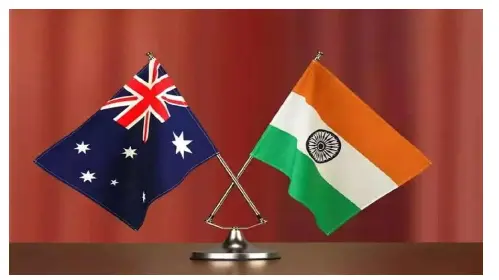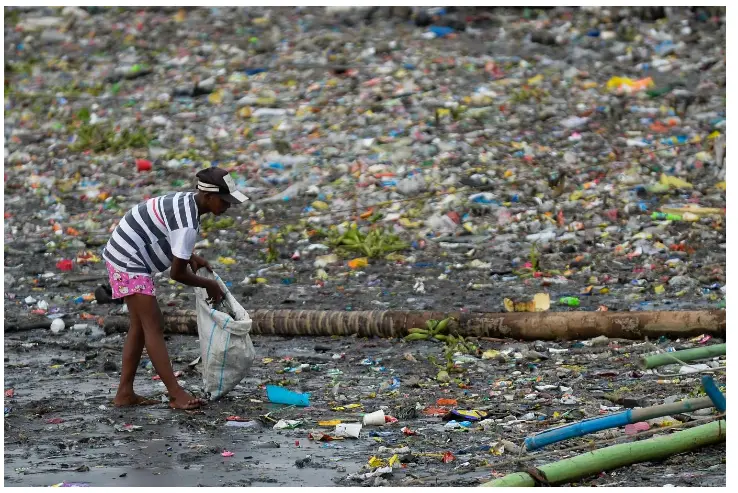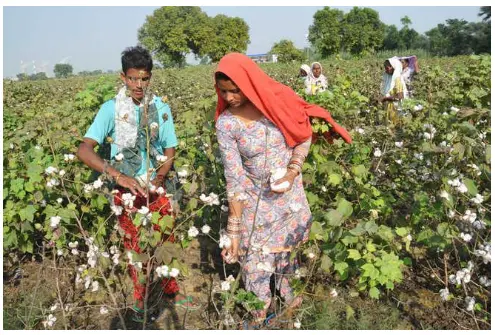Thursday, 25th April 2024
Multilateral Development Banks Reforms
In News: Recently, the UN Secretary-General emphasized that reforming multilateral development banks (MDBs) will be a major focus at this year's Summit of the Future, taking place during the UN General Assembly in September 2024.

Multilateral Development Banks: Overview
- Multilateral Development Banks (MDBs) are international financial institutions tasked with providing financing and expert guidance for economic and social development projects in developing nations.
- These banks are established and funded by multiple countries, pooling resources and offering shared representation on their governing boards.
- Originating in the post-World War II era, their primary aim was to reconstruct war-torn countries and stabilize the global financial system.
Objectives of MDBs
- MDBs prioritize development objectives over profit maximization, unlike commercial banks.
- Their primary focus lies in addressing development challenges, such as eradicating extreme poverty and reducing economic disparities.
- They achieve this by offering loans at low or zero interest rates and providing grants to support projects spanning infrastructure, energy, education, environmental sustainability, and other key developmental areas.
Major MDBs
- Key MDBs include the World Bank Group, the Asian Development Bank, the African Development Bank, the European Bank for Reconstruction and Development, and the Inter-American Development Bank.
Key Challenges Associated with MDBs
- Resource Constraints: MDBs often face limitations due to restricted capital availability, hindering their capacity to finance extensive development endeavors.
- Adapting to Global Challenges: Challenges like climate change, pandemics, and technological disruptions require MDBs to adapt their strategies effectively, which they have struggled to do comprehensively.
- Decision-Making: Some MDBs exhibit voting structures that favor developed countries, necessitating a push for greater representation and transparency in decision-making.
- One-Size-Fits-All Approach: Standardized lending conditions may not adequately address the diverse economic circumstances and capabilities of developing countries.
Necessary Reforms in MDBs
- Financing Climate Action: MDBs should enhance efforts to mobilize resources for climate change mitigation and adaptation, possibly through dedicated finance mechanisms and innovative instruments.
- Knowledge Sharing & South-South Cooperation: Facilitating knowledge exchange between developing countries can foster collaboration and support the adoption of successful development strategies.
- Graduation Strategies: Implementing clear pathways for middle-income countries to transition from concessional to market-rate financing, allowing MDB resources to be directed towards countries still in need.
- Social and Environmental Safeguards: Strengthening safeguards to ensure MDB-funded projects promote sustainable development while avoiding adverse social and environmental impacts.
|
UPSC Previous Year Questions Prelims (2019) Q. With reference to Asian Infrastructure Investment Bank (AIIB), consider the following statements:
Which of the statements given above is/are correct? (a) 1 only Ans: (a) Mains (2012) Q. India has recently signed to become a founding member of New Development Bank (NDB) and also the Asian Infrastructure Bank (AIIB). How will the role of the two Banks be different? Discuss the strategic significance of these two Banks for India. |
Source: TH
‘State of the Climate in Asia 2023’ Report
In News: According to the 'State of the Climate in Asia 2023' report by the World Meteorological Organisation (WMO), Asia experienced the highest number of disasters globally in 2023.
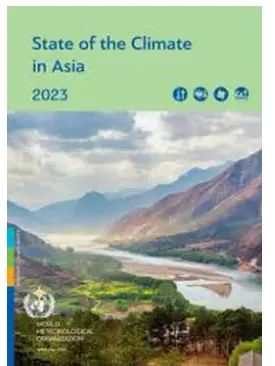
Key Highlights of the ‘State of the Climate in Asia 2023’ Report:
- Extreme Weather Events in Asia
- In 2023, 79 extreme weather events affected over 9 million people in Asia, resulting in over 2,000 deaths.
- Compared to 2022, the number of reported disaster events decreased slightly.
- The impact in 2023 was lower due to fewer significant events like the 2022 Pakistan floods.
- Temperature Trends
- The mean temperature over Asia in 2023 was 0.91°C above the 1991–2020 reference period, the second highest on record.
- Japan experienced its hottest summer on record.
- Glacier Loss in High-Mountain Asia
- Glaciers in High-Mountain Asia have lost significant mass over the past 40 years, accelerating in recent years.
- Record-breaking temperatures in 2023 exacerbated mass loss in the Eastern Himalayas and the Tien Shan.
- Ocean Warming
- The ocean around Asia has shown an overall warming trend since 1982, with sea-surface temperature anomalies in the north-west Pacific Ocean reaching record highs in 2023.
- Drought in South-west China
- South-west China experienced drought conditions in 2023 due to below-normal precipitation levels.
- Hydrometeorological Hazards
- Floods and storms accounted for 80% of hydrometeorological hazards in Asia, with Yemen experiencing heavy rainfall and widespread floods.
What the ‘State of the Climate in Asia 2023’ Report Highlighted About India:
- Impact of Extreme Weather Events
- India experienced severe heat waves, rainfall-induced floods, glacial lake outbursts, and tropical cyclones in 2023.
- Severe heat waves resulted in about 110 deaths due to heatstroke, with Ballia and Deoria districts in Uttar Pradesh being severely affected.
- Flood events in August 2023 caused 25 deaths in Himachal Pradesh and Uttarakhand, prompting a state of emergency and rescue operations by the Indian government.
- Six tropical cyclones formed in the North Indian Ocean, slightly above the average, with significant damage and loss of life reported.
- Glacial Lake Outburst Flood
- A significant glacial lake outburst flood in South Lhonak Lake in Sikkim resulted in over 40 deaths after breaching the Chungthang dam downstream on the Teesta River.
What Needs to be Done?
- Addressing Disaster Risk Reduction
- There is an urgent need to bridge the gap in climate projections and tailored products to inform long-term interventions for adaptation and mitigation of climate change impacts.
- With annual losses in Asia expected to rise significantly by 2030, efforts must focus on providing tailored support products to effectively mitigate disaster risks.
Source: IE
Rwanda (Asylum and Immigration) Bill
In News: The UK parliament has approved a bill that grants the government the authority to transfer asylum seekers to Rwanda, where their claims will be assessed by the East African nation.
Overview of the Rwanda (Asylum and Immigration) Bill:
- Context:
- The surge in migrants arriving in Britain via small boats reached 45,774 in 2022, a stark increase from 299 four years earlier.
- Criminal gangs exploit refugees by charging them significant sums to transport them across the English Channel.
- Passage of the Bill:
- The House of Lords, the upper house of parliament, approved the Safety of Rwanda (Asylum and Immigration) Bill.
- The legislation designates Rwanda as a safe third country, allowing the removal of asylum seekers to Rwanda.
- Objective of the Bill:
- The primary aim is to bypass a Supreme Court ruling that questioned Rwanda's suitability as a safe destination for asylum-seekers.
- The court highlighted Rwanda's poor human rights record, citing instances of enforced disappearances and torture.
- UK-Rwanda Treaty:
- In December 2023, the UK government signed a treaty with Rwanda to enhance protections for migrants, facilitating the passage of the bill.
- This move was a response to concerns raised by the Supreme Court regarding Rwanda's treatment of asylum-seekers.
- UK Government's Policy:
- Former UK Prime Minister Boris Johnson inked a deal with Rwanda in April 2022, allowing the UK to send asylum-seekers there.
- The scheme aimed to combat human trafficking by resettling undocumented migrants arriving in the UK to Rwanda.
- The UK government allocated substantial funds to Rwanda for housing and integrating migrants as part of a pilot program lasting five years.
- Criticism:
- The United Nations Refugee Agency (UNHCR) criticized the practice of transferring asylum seekers to third countries without adequate safeguards.
- In 2022, the European Court of Human Rights (ECHR) intervened to prevent the first plane carrying asylum-seekers from departing for Rwanda.
- Opposition parties in the UK argued that the Rwanda plan was costly and did not address the root causes of immigration.
Source: CNN
Marine Cloud Brightening
In News: Recently, scientists have been conducting tests on a geoengineering technique known as marine cloud brightening.
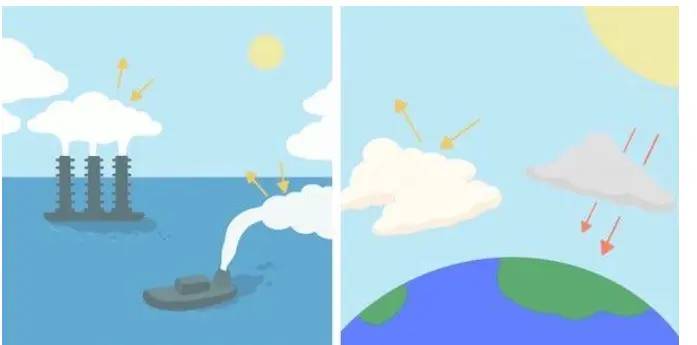
Marine Cloud Brightening (MCB): A Climate Intervention
About Marine Cloud Brightening
- Marine cloud brightening is a scientific initiative investigating the impact of altering atmospheric particles (aerosols) on cloud reflectivity.
- Researchers release tiny aerosol particles into the atmosphere to enhance cloud brightness, aiming for increased sunlight reflection.
- Specific types of clouds can significantly increase reflectivity with the right size and concentration of aerosols.
- Satellite images show clouds brightened by ship emissions, known as "ship tracks."
Goals of the Marine Cloud Brightening Program
- Gain a better understanding of the present-day effects of pollution aerosols on clouds.
- Explore whether aerosol particles made from sea salt could be used to reduce near-term climate warming while greenhouse gas concentrations are lowered.
- Assess the benefits, risks, and efficacy of intentional aerosol use to reduce warming through various marine cloud brightening implementations.
Aerosol and Climate Effect
- Aerosol concentration is declining due to expanding air quality regulations, leading to fewer particles in the atmosphere.
- Most aerosol particles have a cooling effect on climate, offsetting around 0.5°C of global warming from human emissions.
- Uncertainty about aerosol effects on clouds contributes to uncertainty in future warming projections.
Challenges and Risks Associated with MCB
- Technical Feasibility: MCB involves spraying seawater into the atmosphere at significant altitudes, presenting engineering complexities in design, cost, maintenance, and operation.
- Environmental Impacts: Alterations in cloud patterns and precipitation could affect regional climate and hydrological cycles, potentially leading to unintended consequences like droughts or floods.
- Ethical Issues: MCB raises ethical dilemmas about human intervention in natural processes and governance surrounding its implementation.
- Moral Hazard: MCB might induce complacency among policymakers and the public, reducing their commitment to reducing greenhouse gas emissions and adapting to climate change.
Conclusion
Marine Cloud Brightening (MCB) is in its early research and development stages, with scientists diligently exploring its feasibility, efficacy, and potential impacts.
It remains one of several geoengineering methods to mitigate global warming, emphasizing sustainable human adaptation while acknowledging associated risks and uncertainties.
|
UPSC Previous Year Questions Prelims (2019) Q. In the context of which of the following do some scientists suggest the use of cirrus cloud thinning technique and the injection of sulphate aerosol into stratosphere? (a) Creating the artificial rains in some regions Ans: (d) Prelims (2014) Q. Consider the following statements: Chlorofluorocarbons, known as ozone-depleting substances, are used
Which of the statements given above is/are correct? (a) 1, 2 and 3 only Ans: (c) Mains (2014) Q. Bring out the relationship between the shrinking Himalayan glaciers and the symptoms of climate change in the Indian subcontinent. |
Source: ST
Golden Trevally Fish
In News: Researchers at the ICAR-Central Marine Fisheries Research Institute (CMFRI) have achieved successful captive breeding of golden trevally (Gnathanodon speciosus).

Overview of Golden Trevally Fish and Central Marine Fisheries Research Institute
About Golden Trevally Fish:
- The Golden Trevally, also known as the Golden Kingfish, is a valuable marine species highly sought after for its meat quality and ornamental value.
- It is considered an excellent candidate for mariculture due to its rapid growth rates and significant market demand for both consumption and ornamental purposes.
- This reef-associated fish species is commonly found living among larger fishes such as skates, sharks, and groupers.
- In India, observations of fish landings indicate that Golden Trevally are predominantly caught in reef area fishing grounds located in Tamil Nadu, Puducherry, Kerala, Karnataka, and Gujarat.
About Central Marine Fisheries Research Institute (CMFRI):
- Established by the Government of India in 1947, CMFRI operates under the Ministry of Agriculture and Farmers Welfare.
- It became part of the Indian Council of Agricultural Research (ICAR) in 1967.
- Mandate:
- Monitoring and assessment of exploited and under-exploited marine fisheries resources within the Exclusive Economic Zone.
- Investigation of fluctuations in marine fisheries resource abundance in response to environmental changes.
- Development of mariculture technologies for finfish, shellfish, and other culturable organisms in open seas to complement capture fishery production.
- One notable achievement of CMFRI is the development and refinement of the "Stratified Multistage Random Sampling Method" for estimating fishery catch and effort along India's extensive coastline stretching over 8000 kilometers.
- Headquarters: Located in Kochi, Kerala.
Source: BL
National Career Service Portal
In News: The government aims to enhance the nine-year-old National Career Service (NCS) portal to connect millions of young individuals with potential employers, aiming to build a future-ready workforce.
Overview of the National Career Service Portal
About the National Career Service Portal:
- The National Career Service Portal offers online career counselling and vocational guidance services to individuals who register on the platform.
- Its primary objective is to provide jobseekers with essential information necessary to make informed career choices based on their qualifications, skill sets, and interests.
- The portal serves as a nationwide online platform for job seekers and employers, facilitating job matching in a dynamic, efficient, and responsive manner. It also hosts a repository of career-related content for job seekers.
What is the National Career Service?
- The National Career Service is a mission-mode project launched in 2015 as part of the E-Governance Plan.
- Objectives:
- Bridging the gap between job seekers and employers, candidates seeking training and career guidance, and agencies offering training and counselling services by transforming the National Employment Service.
- It provides a range of career-related services, including dynamic job matching, career counselling, job notifications, vocational guidance, and information on skill development courses and internships.
Focus Areas:
- Enhancing career and employment opportunities.
- Providing counselling and guidance for career development.
- Emphasizing decent employment practices.
- Enhancing female labour force participation.
- Promoting entrepreneurial endeavors.
Nodal Agency:
The project is implemented by the Directorate General of Employment under the Ministry of Labour & Employment.
Source: BS
Voyager 1 and Voyager 2 Spacecraft
In News: Recently, NASA announced that its Voyager 1 probe has resumed transmitting coherent data to ground control after a period of transmitting unintelligible information.

Overview of Voyager 1 and Voyager 2 Spacecraft
Voyager 1 Spacecraft:
- Launched by NASA on September 5, 1977, Voyager 1 is the twin probe of Voyager 2.
- Its primary objective is to explore the outer Solar System and beyond.
- Voyager 1 conducted flybys of Jupiter and Saturn to study their moons, rings, and magnetic fields.
- It currently holds the record as the farthest human-made object from Earth.
- Voyager 1 crossed the heliosphere, marking humanity's first venture into interstellar space in August 2012.
- Significant discoveries include a thin ring around Jupiter and two new moons (Thebe and Metis), and five new moons at Saturn, along with a new ring (G-ring).
- It carries a golden record containing sounds and images representing Earth's life and culture.
- NASA estimates Voyager 1's instruments will continue operating until at least 2025.
Voyager 2 Spacecraft:
- Also launched by NASA on August 20, 1977, Voyager 2 is part of the Voyager program alongside Voyager 1.
- Its primary mission is to explore the outer planets of the solar system and then embark on an interstellar journey.
- Voyager 2 is the second spacecraft to enter interstellar space.
- Similar to Voyager 1, it carries a golden record.
- Voyager 2 holds several firsts, including studying all four of the solar system's giant planets up close.
- Notable discoveries include a 14th moon at Jupiter, 10 new moons and two rings at Uranus, and five moons, four rings, and a "Great Dark Spot" at Neptune.
Source: NDTV
TINA Factor
In News: The recent uptick in gold prices can be attributed to the TINA (There Is No Alternative) phenomenon in China, prompting retail consumers, investors, futures traders, and the central bank to gravitate towards the precious metal amidst periods of uncertainty.
Understanding the TINA Factor
- TINA stands for There Is No Alternative, representing a situation where investors view a specific asset class or investment as the most favorable option given the current market conditions.
- This perception arises when other investment alternatives are considered unattractive due to factors like low returns, high volatility, or economic uncertainty.
- Essentially, investors opt for the safest investment instrument due to fears about potential uncertainties in the future, leading them to believe that no other viable alternatives exist.
- The TINA effect can contribute to the formation of price bubbles, wherein asset prices inflate to unrealistic levels due to a lack of reasonable alternatives.
- Historically, TINA has emerged in response to certain economic conditions where traditionally safe investments, such as bonds or real estate, become less appealing.
- This could occur due to factors like low interest rates or an overheated real estate market, resulting in diminished returns for these assets.
- During such periods, investors may perceive their investment options as significantly limited, prompting them to embrace the TINA mindset.
- When stock prices surge and bond returns decline, TINA may justify investing in alternative assets like gold, cryptocurrencies, or non-fungible tokens (NFTs).
Source: BT
Crystal Maze 2 Missile
In News: The Indian Air Force (IAF) has effectively conducted a test firing of the Crystal Maze 2 missile.

Overview of Crystal Maze 2 Missile
Crystal Maze 2, also known as ROCKS, represents an air-launched medium-range ballistic missile originating from Israel, serving a pivotal role in modern military strategy.
Features of Crystal Maze 2:
- Origin: Developed in Israel, Crystal Maze 2 is designed to engage high-value stationary and relocatable assets, including long-range radars and air defense systems, within potential adversary territories.
- Enhanced Capabilities: Distinguishing itself from its predecessor, Crystal Maze 1, the Crystal Maze 2 missile exhibits extended stand-off range capabilities as an air-to-surface missile, enabling it to engage targets over 250 kilometers away.
- Warhead Options: The missile offers versatility with options for either a penetration or blast fragmentation warhead, enabling it to effectively neutralize above-ground or well-protected underground targets.
- GPS-Denied Environments: Crystal Maze 2 is specifically engineered to operate efficiently in GPS-denied environments, ensuring operational effectiveness even in challenging conditions.
- Deployment Strategy: The deployment strategy of ROCKS involves releasing the missile outside the surface-to-air-defended area, followed by a high-velocity trajectory to minimize risk to both aircraft and missiles during engagement.
Source: IT
Toss out the junk food, bring back the healthy food plate
In News: A recent article discusses the concerns associated with the consumption of junk food and underscores the importance of fostering a grassroots movement backed by effective policy measures.
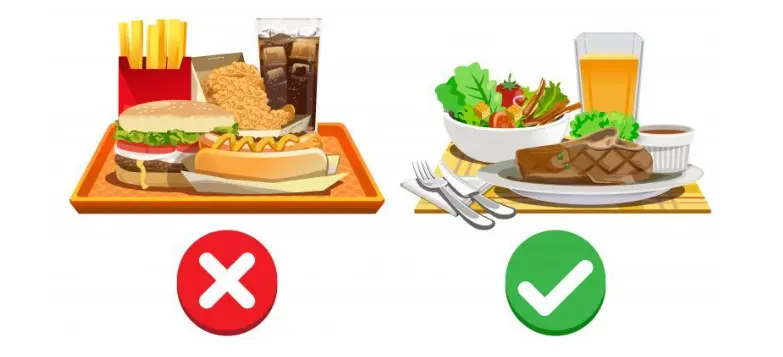
Various Concerns Related to Junk (Fast) Foods in India
- Categorised as HFSS Foods:
- Junk foods are categorized as high in fats, salts, and sugars (HFSS), leading to adverse health effects like weakened immunity, hypertension, blood sugar spikes, weight gain, and increased cancer risk.
- Common examples of HFSS foods in India include cookies, cakes, chips, namkeen, instant noodles, sugary drinks, frozen meals, canned fruits, Indian sweets, and bakery products.
- Significant Rise in Lifestyle Diseases:
- Unhealthy diets contribute significantly to the surge in lifestyle diseases in India, with metabolic disorders affecting a significant portion of the population, including diabetes, hypertension, and abdominal obesity.
- Effects of Aggressive Advertising:
- Aggressive advertising of "tasty" and "affordable" junk foods, especially targeting younger consumers, influences dietary habits significantly, leading to increased consumption of packaged foods and sweetened beverages.
- High Glycemic Index (GI) and Glycemic Load:
- High GI diets, prevalent in India, contribute to health risks such as type 2 diabetes and cardiovascular diseases. Common high GI foods include sugar, white rice, maida, potato, sweetened drinks, jaggery, and cookies.
- The Process of 'Malting' in Making Processed Foods:
- The process of malting, used in making processed foods, contributes to sugar content, leading to adverse health effects like fatty liver and insulin resistance.
- Concerns Due to 'Processed Baby Foods':
- Processed baby foods containing added sugar, like Cerelac, can lead to health issues like obesity and diabetes in infants due to excess sugar consumption.
- Lack of Precise Definition for HFSS Foods:
- While regulations exist to limit HFSS food consumption, there's a lack of a precise definition or identification process, making effective regulation challenging.
- FSSAI Using Rating Stars and Not Warning Labels:
- The FSSAI's regulation on HFSS foods lacks clarity regarding whether companies need to declare fat, sugar, and salt content on product labels, opting for health rating stars over warning labels.
- Escaping Star Rating Systems:
- While the INR system rates packaged foods based on nutritional profiles, there are concerns that producers may manipulate ratings by adding healthy components while still selling unhealthy foods.
Various Ways to Address the Concerns Arising out HFSS Foods
- Supreme Court's Ruling:
- The Supreme Court's emphasis on protecting public health provides a constitutional foundation for addressing concerns related to HFSS foods.
- Ensuring Effective Implementation of FSSAI Regulations:
- Regulations restricting the sale of HFSS foods in school premises and enforcing regulations on misleading advertisements are crucial for effective implementation.
- Relooking FSSAI Regulation:
- Regulations permitting sugar in infant foods need review to align with health objectives and minimize health risks.
- Need for Comprehensive Legislation:
- Comprehensive regulations defining healthy and unhealthy foods and implementing front-of-pack labeling are essential to regulate HFSS food consumption effectively.
- Preventing Unhindered Marketing of Unhealthy Products:
- Strong action against illegal advertisements and promotions of unhealthy products, particularly targeting children, is necessary.
- Promoting Local and Seasonal Fruits and Vegetables:
- Campaigns promoting local and seasonal foods and multimedia messaging on the health impacts of junk foods can encourage healthier dietary choices.
- Four Strategies as Key to Translating Policy Intention Into Meaningful Change:
- Protecting children from harmful food influences, implementing front-of-pack labeling, subsidizing healthy foods, and promoting behavioral change campaigns are vital strategies for meaningful change.
Conclusion
Prioritizing healthy and diverse diets through policy interventions and public awareness campaigns is crucial for combating the adverse effects of HFSS foods and promoting better health outcomes.
|
UPSC Previous Year Questions Prelims (2011) Q. Aspartame is an artificial sweetener sold in the market. It consists of amino acids and provides calories like other amino acids. Yet, it is used as a low-calorie sweetening agent in food items. What is the basis of this use? (a) Aspartame is as sweet as table sugar, but unlike table sugar, it is not readily oxidized in human body due to lack of requisite enzymes (b) When aspartame is used in food processing, the sweet taste remains, but it becomes resistant to oxidation (c) Aspartame is as sweet as sugar, but after ingestion into the body, it is converted into metabolites that yield no calories (d) Aspartame is several times sweeter than table sugar, hence food items made with small quantities of aspartame yield fewer calories on oxidation Ans: (d) |
Source: TH
Share the article
Edukemy’s Current Affairs Quiz is published with multiple choice questions for UPSC exams
MCQ
Get Latest Updates on Offers, Event dates, and free Mentorship sessions.

Get in touch with our Expert Academic Counsellors 👋
Frequently Asked Questions
UPSC Daily Current Affairs focuses on learning current events on a daily basis. An aspirant needs to study regular and updated information about current events, news, and relevant topics that are important for UPSC aspirants. It covers national and international affairs, government policies, socio-economic issues, science and technology advancements, and more.
UPSC Daily Current Affairs provides aspirants with a concise and comprehensive overview of the latest happenings and developments across various fields. It helps aspirants stay updated with current affairs and provides them with valuable insights and analysis, which are essential for answering questions in the UPSC examinations. It enhances their knowledge, analytical skills, and ability to connect current affairs with the UPSC syllabus.
UPSC Daily Current Affairs covers a wide range of topics, including politics, economics, science and technology, environment, social issues, governance, international relations, and more. It offers news summaries, in-depth analyses, editorials, opinion pieces, and relevant study materials. It also provides practice questions and quizzes to help aspirants test their understanding of current affairs.
Edukemy's UPSC Daily Current Affairs can be accessed through:
- UPSC Daily Current Affairs can be accessed through Current Affairs tab at the top of the Main Page of Edukemy.
- Edukemy Mobile app: The Daily Current Affairs can also be access through Edukemy Mobile App.
- Social media: Follow Edukemy’s official social media accounts or pages that provide UPSC Daily Current Affairs updates, including Facebook, Twitter, or Telegram channels.


